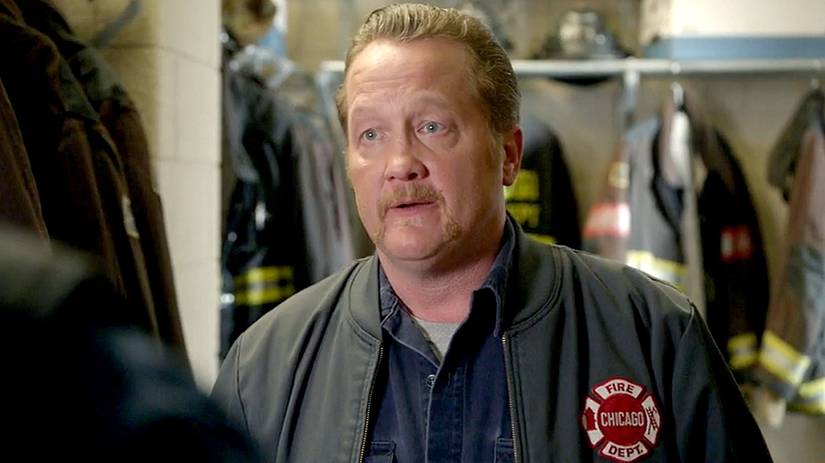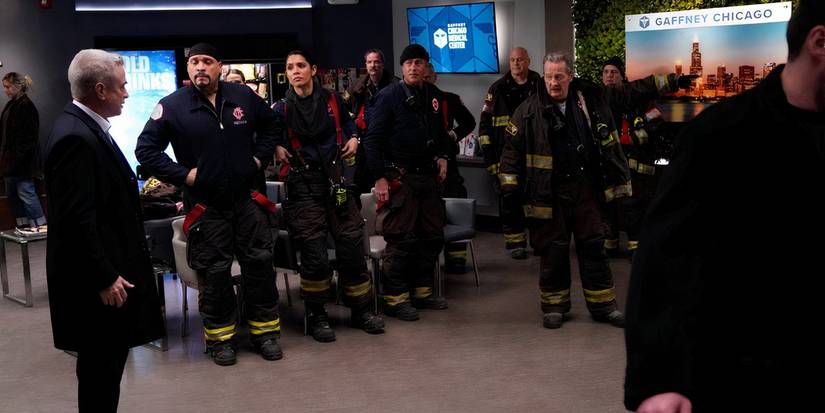
For context, the Chicago Fire season 13 finale tackled several narratives. That included Stella Kidd and Kelly Severide’s failed attempt at adopting, only for the show to end with the brilliant news that they were expecting their first kid. Secondly, Chief Dom Pascal’s personal crisis about the death of his wife was finally resolved. Elsewhere, Sam Carver and Violet Mikami confessed their feelings for each other.
While all of those aforementioned plots seemingly ended on a high note, not all of them resulted in a better Chicago Fire season 14. Beyond those retracted good news, Firehouse 51 is plagued by a bigger issue — something that we have all been thinking about in the last couple of years.
Mouch Acknowledges The Constant Firehouse 51 Changes In Chicago Fire Season 14
Chicago Fire season 14, episode 1, “Kicking Down Doors” doesn’t waste time introducing its brand new member, Sal Vasquez, who finds himself immediately on-call under Lieutenant Kidd. Technically, he is the replacement for Carver, who still moved forward with his decision to move despite his heart-to-heart with Violet at the end of season 13.
I get to know Carver, he leaves. I get to know Damon, he’s transferred. I figure, I ignore this guy, he’ll stick around
Mouch isn’t the only feeling this way. In fact, it’s a reflection of viewers’ perspective on the continuous cast reshuffling in Chicago Fire. Before Jack Damon and Carver’s respective exit, Firehouse 51 lost Blake Gallo, Derrick Gibson, Sylvie Brett, Matt Casey, and Wallace Boden. It’s also about to lose Darren Ritter, as was confirmed ahead of One Chicago’s fall 2025 return.
How Firehouse 51’s Constant Reshuffling Is Ruining The Best Thing About Chicago Fire
When Dick Wolf and NBC launched One Chicago, its biggest difference from the Law & Order franchise was that it was more focused on its characters. The New York-based procedurals’ cases were what drove its stories, albeit with a smattering of personal arcs. In the Windy City, however, the characters are king, with the the weekly calls usually used to drive their narratives.


